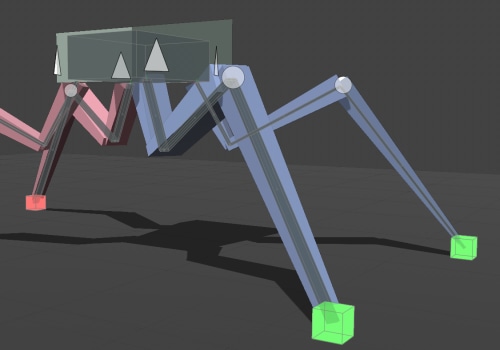Welcome to our comprehensive guide on solving systems of equations for parents. As a parent, you may remember struggling with algebra problems and word problems in school. Now, with the ever-changing curriculum, you may find yourself struggling to help your child with their math homework. Fear not, because we have got you covered! In this article, we will walk you through the steps of solving systems of equations, a crucial skill in algebra and word problem solving.
Whether you are a math whiz or just need a refresher, our guide will equip you with the tools and knowledge to assist your child in solving these complex problems. So let's dive in and conquer those equations together! In algebra, solving systems of equations is a fundamental skill that students must master in order to succeed in higher level math courses. A system of equations is a set of two or more equations with multiple variables that are solved together to determine the values of the variables. This process involves finding the intersection point between the equations, which represents the solution to the system. So why is it important to learn how to solve systems of equations? Not only does it help develop critical thinking and problem-solving skills, but it also has practical applications in fields such as science, engineering, and economics.
Systems of equations are often used to model real-world situations and find solutions to complex problems. Now let's delve into the various methods for solving systems of equations. The most commonly used methods are substitution, elimination, and graphing. Substitution involves solving one equation for a variable and substituting that expression into the other equation. This method is useful when one of the equations has a variable with a coefficient of 1.Elimination, on the other hand, involves adding or subtracting the equations to eliminate one of the variables.
This method is ideal when both equations have coefficients for the same variable. Lastly, graphing involves plotting the equations on a coordinate plane and finding the point of intersection. It's important to provide clear explanations and examples for each method to ensure understanding. For example, let's say we have the following system of equations: 3x + 2y = 10 and x - y = 2.To solve this system using substitution, we can solve the second equation for x, which gives us x = y + 2.We can then substitute this expression into the first equation, giving us 3(y + 2) + 2y = 10. We can then solve for y and substitute that value back into the equation to find the value of x.However, it's also important to be aware of common mistakes that students make when solving systems of equations. These include forgetting to distribute negative signs, making calculation errors, and not checking their answers.
To help your child improve their problem-solving skills, encourage them to double-check their work and practice regularly. To further aid in their learning, we have provided practice exercises and worksheets that you can use with your child at home. These exercises cover a variety of difficulty levels and allow students to apply their knowledge and practice solving different types of systems of equations. If you feel that your child needs additional support, hiring an algebra tutor may be a good option. When looking for a tutor, it's important to consider their qualifications and experience in teaching algebra. Look for tutors who have a strong background in math and have experience working with students in your child's age group.
It's also helpful to ask for references or read reviews from other parents.
Finding the Right Algebra Tutor
If you're considering hiring an algebra tutor, we have recommendations on how to find qualified tutors in your area and what to look for in a tutor.Avoiding Common Mistakes and Improving Problem-Solving Skills
In order for students to successfully solve systems of equations, they must be able to accurately identify and eliminate variables. However, this is often where many students struggle. One common mistake is not properly distributing coefficients when using the elimination method. This can lead to incorrect solutions and confusion for the student.To avoid this, it's important to emphasize the importance of carefully distributing coefficients in each equation before eliminating variables. Another common mistake is not checking the final answer by substituting it back into the original equations. This step is crucial in ensuring that the solution is correct. It's also important for students to practice regularly and not rely solely on memorization of formulas.
Encourage your child to work through various types of systems of equations problems to improve their problem-solving skills. Additionally, consider seeking help from a qualified algebra tutor who can provide personalized support and guidance. By addressing these common mistakes and consistently practicing problem-solving, your child will be on their way to mastering systems of equations.
Understanding Systems of Equations
In algebra, systems of equations are a set of two or more equations that are solved together to find the values of the variables. These equations usually contain two variables, x and y, and can be solved using various methods such as substitution, elimination, or graphing.Understanding systems of equations is crucial in algebra because they are used to solve real-world problems and are the foundation for more complex algebraic concepts. Systems of equations are used to model situations that involve multiple variables. For example, a business may use systems of equations to determine the optimal number of products to produce in order to maximize profits. By solving the system, they can find the values of the variables that will result in the desired outcome. Furthermore, systems of equations help students develop critical thinking and problem-solving skills. By learning how to manipulate equations and solve for multiple variables, students can apply these skills to a wide range of mathematical and real-world problems. If your child is struggling with systems of equations, don't worry! With practice and guidance, they can improve their understanding and mastery of this important algebraic concept.
Practice Makes Perfect: Exercises and Worksheets
One of the most effective ways to help your child improve their algebra skills is through practice.By providing them with access to practice exercises and worksheets, you can give them the opportunity to apply the techniques and concepts they have learned in solving systems of equations. These practice exercises and worksheets are designed to reinforce your child's understanding of solving systems of equations. They provide a variety of problems with varying levels of difficulty, allowing your child to progress at their own pace. The more they practice, the more confident and proficient they will become in solving systems of equations. You can find a variety of practice exercises and worksheets online, or you can create your own based on the techniques and tips covered in this article. Make sure to include a mix of word problems and numerical equations to challenge your child's problem-solving skills.
Solving Systems of Equations: Methods and Examples
Solving systems of equations can be a challenging concept for students to grasp, but with the right methods and examples, it can become much more manageable.In this section, we will explore different techniques for solving systems of equations and provide clear examples to help reinforce the concepts. One method for solving systems of equations is called substitution. This involves solving for one variable in one equation and then substituting that value into the other equation. Let's see an example.
Example:
Solve the system of equations by substitution.2x + 3y = 11
x - y = 1Solving for x in the second equation, we get x = 1 + y.
We can then substitute this value into the first equation to get 2(1 + y) + 3y = 11. Simplifying, we get 2 + 5y = 11, or y = 2.Plugging this value back into the equation x = 1 + y, we get x = 3.Therefore, the solution to the system of equations is (3, 2).Another method for solving systems of equations is called elimination. This involves adding or subtracting the equations to eliminate one variable and then solving for the remaining variable. Let's take a look at an example.
Example:
Solve the system of equations by elimination.2x + 3y = 8
4x - 5y = -17We can multiply the second equation by -2 and add it to the first equation to eliminate the x variable. This gives us -7y = -42, or y = 6.Plugging this value back into either of the original equations, we get x = 2.Therefore, the solution to the system of equations is (2, 6).These are just a few examples of methods for solving systems of equations.
Other techniques include graphing and using matrices. By practicing with different types of problems and seeing these methods in action, your child can become more confident in solving systems of equations. By now, you should have a thorough understanding of solving systems of equations and how to support your child in their algebra studies. Remember to be patient and encouraging as they work through these concepts, and utilize the resources provided to help them practice and improve. With your support, they will be well on their way to mastering algebra!.











